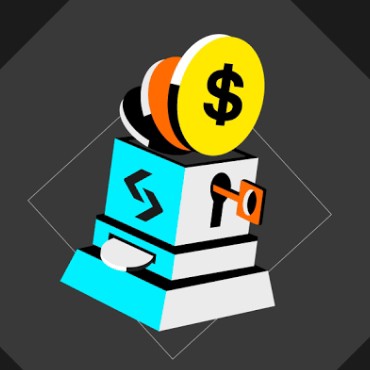
Altlayer priceALT
ALT/USD price calculator
Altlayer market Info
Live Altlayer price today in USD
Do you think the price of Altlayer will rise or fall today?
Now that you know the price of Altlayer today, here's what else you can explore:
How to buy Altlayer (ALT)?How to sell Altlayer (ALT)?What is Altlayer (ALT)What would have happened if you had bought Altlayer (ALT)?What is the Altlayer (ALT) price prediction for this year, 2030, and 2050?Where can I download Altlayer (ALT) historical price data?What are the prices of similar cryptocurrencies today?Want to get cryptocurrencies instantly?
Buy cryptocurrencies directly with a credit card.Trade various cryptocurrencies on the spot platform for arbitrage.Altlayer price prediction
When is a good time to buy ALT? Should I buy or sell ALT now?
What will the price of ALT be in 2026?
In 2026, based on a +5% annual growth rate forecast, the price of Altlayer(ALT) is expected to reach $0.01230; based on the predicted price for this year, the cumulative return on investment of investing and holding Altlayer until the end of 2026 will reach +5%. For more details, check out the Altlayer price predictions for 2025, 2026, 2030-2050.What will the price of ALT be in 2030?
About Altlayer (ALT)
What Is Altlayer?
Altlayer is an open and decentralized protocol designed for rollups, a type of blockchain technology. It introduces a unique concept known as "Restaked rollups," which enhances existing rollups by providing improved security, decentralization, interoperability, and crypto-economic fast finality. This approach allows for the creation of rollups from various rollup stacks like OP Stack, Arbitrum Orbit, ZKStack, and Polygon CDK, and then enhances them with AltLayer's features.
A key innovation in AltLayer is the concept of "ephemeral rollups." These are highly resource-optimized rollups tailored for decentralized applications (dApps) that anticipate a surge in demand. Developers can quickly spin up these rollups, use them as needed, and then dispose of them, combining the benefits of application-specific rollups with the robustness of a general-purpose Layer 1 blockchain. This flexibility is crucial for fostering innovation and rapid experimentation in the blockchain space, making AltLayer a versatile and powerful tool for developers.
Resources
Official Documents: https://docs.altlayer.io/altlayer-documentation/welcome/overview
Official Website: https://altlayer.io/
How Does Altlayer Work?
AltLayer operates by integrating three core components known as Actively Validated Services (AVSes), which are created on-demand for each rollup. These services include verification of the rollup's state correctness, faster finality, and decentralized sequencing. This structure ensures that each rollup maintains high security and efficiency standards.
The platform's "Restaked rollups" are pivotal in its operation. They leverage the power of EigenLayer's restaking mechanism, allowing for enhanced security and efficiency. AltLayer also offers a Rollup-as-a-Service (RaaS) product, enabling developers to launch application-specific rollups without worrying about finding nodes to operate the rollup or maintaining any code. This service is akin to a software-as-a-service model, simplifying the rollup creation process and making it accessible to a broader range of developers.
Furthermore, AltLayer addresses the challenge of centralized sequencing in rollups. Through its SQUAD system, it decentralizes the sequencer role, crucial for processing transactions in a rollup. This approach not only enhances security but also ensures continuity of service, even if a single sequencer becomes unavailable.
What Is ALT Token?
The ALT token is the native utility token of the AltLayer ecosystem. With a total supply of 10 billion tokens, it serves several key functions within the platform. ALT token holders can stake their tokens to participate in the consensus mechanism, securing the network and earning rewards. In the event of malicious activities, these stakes can be slashed as a penalty. In terms of governance, ALT token holders are granted voting rights, allowing them to influence the development and operations of the AltLayer protocol. This aspect of the token ensures a decentralized and community-driven approach to decision-making within the ecosystem. ALT token is also used for transaction fees within the AltLayer ecosystem. This includes storage fees and other services, providing a consistent utility and demand for the token.
What Determines Altlayer’s Price?
The price of AltLayer token (ALT), like any cryptocurrency, is influenced by a complex interplay of factors, making it a focal point for discussions around price prediction in 2024, historical cryptocurrency charts, and investment viability. Market demand and supply dynamics, technological advancements within the AltLayer ecosystem, and broader blockchain market trends significantly impact its valuation. Investor sentiment, often swayed by AltLayer's technological milestones and partnerships, plays a crucial role, as does the overall performance of the cryptocurrency market. Regulatory changes and macroeconomic factors also contribute to the price fluctuations of ALT. As investors and enthusiasts scrutinize historical charts for patterns and trends, the question of whether AltLayer's ALT token is a good investment hinges on its ability to maintain robust security, decentralization, and utility within the ever-evolving blockchain landscape.
For those interested in investing or trading Altlayer, one might wonder: Where to buy ALT? You can purchase ALT on leading exchanges, such as Bitget, which offers a secure and user-friendly platform for cryptocurrency enthusiasts.
Related Articles about Altlayer:
Bitget Insights



ALT/USD price calculator
ALT resources
Tags:
What can you do with cryptos like Altlayer (ALT)?
Deposit easily and withdraw quicklyBuy to grow, sell to profitTrade spot for arbitrageTrade futures for high risk and high returnEarn passive income with stable interest ratesTransfer assets with your Web3 walletWhat is Altlayer and how does Altlayer work?
Global Altlayer prices
Buy more
FAQ
What is the current price of Altlayer?
What is the 24 hour trading volume of Altlayer?
What is the all-time high of Altlayer?
Can I buy Altlayer on Bitget?
Can I get a steady income from investing in Altlayer?
Where can I buy Altlayer with the lowest fee?
Related cryptocurrency prices
Prices of newly listed coins on Bitget
Hot promotions
Where can I buy Altlayer (ALT)?
Video section — quick verification, quick trading









